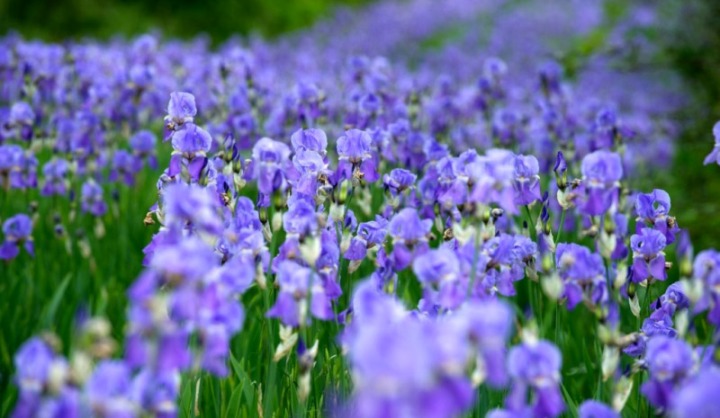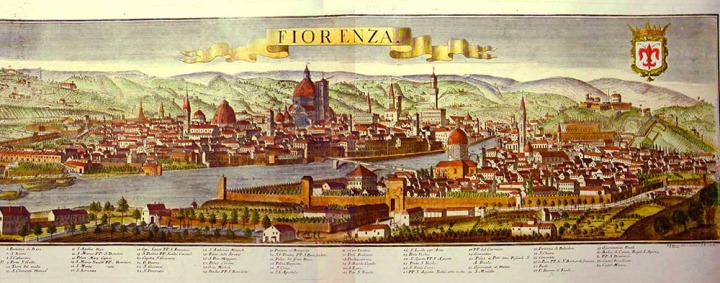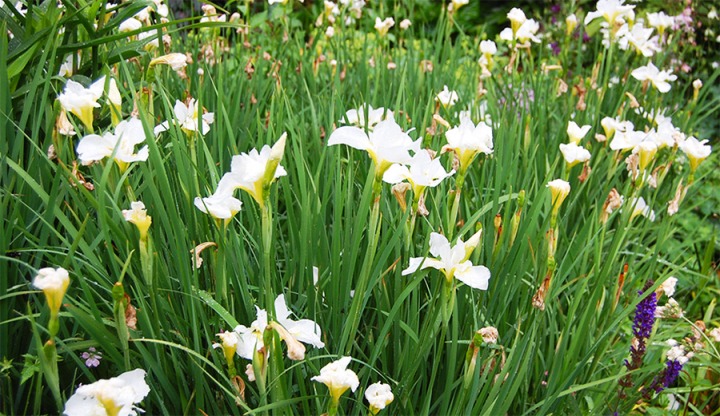For Florentine people, the Lily, also called giaggiolo, is a special flower, with a special meaning. It’s their symbol for over 1,000 years. It represents the city, but for decades it is also the symbol of cultural and sport associations.
Giaggiolo is the name of Iris in the province of Florence and beyond, but talking with a real Florentine you will always hear the word “Giglio” (Lily): the Lily in the Florentine historical banner, the purple Lily symbol of Fiorentina football club, and Florence is called “la città gigliata” (the Lily town) in Italy.

You can talk about Giaggiolo, Iris or Lily, but it is always the same flower: Iris, that grows wild along the Arno river valley and the hills around Florence, as throughout the Chianti area.

The iris can have many different colors, but the most common are: light purple (Pale Iris), dark purple (Iris germanica) and blue-veined white iris (Iris florentina) once widespread but now more rare to see in the Florentine countryside.

If you are lucky enough to walk through the countryside of Florence and Chianti in springtime you’ll see the purple iris everywhere, in the middle of the fields, around the olive trees, in home gardens, in the woods.
Origin and history of “Giglio of Florence”
People may does not know that the Florentine lily was originally white on a red background, but it was transformed into red on a white field from Guelph in 1266, as a sign of victory over the Ghibellines.

The “giglio” is the symbol of Florence town since the eleventh century. It has uncertain origin, but the most accepted legend sees the name “Florentia” join the symbolism of rebirth, the arrival of spring and the goddess Flora. The name was chosen the year of town’s foundation, by the Romans in the year 59 B.C. during the spring celebrations. Festivities in honor of the goddess Flora (Ludi Florales or Floralia, which included games and public competitions) that took place from April 28 to May 3.

The lily of Florence (the white version with hints of blue veins) was chosen during the Middle Ages as symbol of purity, the perfect flower for the Virgin Mary. For that reason, we can not exclude the adoption of lily symbol for the Marian devotion, already important in that area before the Middle Ages.

The symbol of “Lily” was already used by the Florentines as their own flag at the first Crusade (1096-1099). The actual colors date back to 1251 when Ghibellines, exiled from Florence, they continued to show the symbol of Florence as their own. That’s why Guelphs, who at that time were controlling Florence, decided to invert the colors, which remained till these days: red lily on a white field.
Dante talks about the Lily “Giglio” of Florence in his Divine Comedy:
« Vid’io Fiorenza in sì fatto riposo,
che non avea cagione onde piangesse;
con queste genti vid’io glorioso
e giusto il popol suo tanto, che il giglio
non era ad asta mai posto a ritroso
né per division fatto vermiglio »Dante Alighieri, Divina Commedia, paradiso, Canto XVI, 152.
At the time of the City of Florence the lily symbol was sometimes represented into a shield kept by a lion, the famous Lion of Florence called “Marzocco” (you can see it in Signoria square, in front of Palazzo Vecchio, Firenze).

Florence imposed this symbol also to the territories under its control, in fact, you can still see the “red lily” today on many flags of province’s municipalities, as on Castelfiorentino and Scarperia ones, but with an important difference: the lily had to be without of the stamens, the reproduction organs. Only Florence possessed them.

The Napoleonic government, on 1811, tried to impose a new symbol to Florence: a lily flower plant on a green lawn and a silver background. The strong dissent by the Florentines stopped the decree and the government gave it up.
The “fiorino”, the ancient coin of Florence
The “fiorino” was coined in 1252, in Florence, it was 3.54 grams of gold 24 carat. The name comes from the flower “lily” represented in the front of coin, while in the reverse showed the town’s patron: St. John Baptist.
The gold “fiorino” (with “Genovino” and “Zecchino”) was one of the first gold coins minted in Italy after the Roman Empire fell. They also introduced two subdivisions: the Silver Fiorino, initially about 1/20 of the gold fiorino) and the Copper Fiorino, also called “black fiorino” for the color took over time, the value was about 1/12 of the silver one.

In the thirteenth century, and until the Renaissance, thanks to the growing power of Florence bank, the Fiorino became the preferred currency of exchange in Europe (as today US dollar and Euro).
The Iris a big value flower
Really few growers of giaggiolo (or Pale Iris) remained in the Chianti area, and this is a shame. The iris is a precious flower because from its roots, called rhizomes, they extract important essences to create the finest French perfume.
In July and August, you can find some Chianti families engaged in Iris trasformation, one of these families is Manetti from Greve in Chianti (with their company “Sagrona”, productors of wine, oil and iris).
Pieces of rhizome are first cut into slices and then put to dry for 5-6 days. Will be extracted the essence, iridione, with the strong scent of violets. The dried pieces are pulverized and then used as the main ingredient in the French perfume industry.
In the last three decades, iridione has been increasingly replaced by synthetic substances and low value products from the markets of China and North Africa. This effectively marked the end of an intensive cultivation in Italy.

The Chianti area is the perfect place for iris growth, and here today, there are families who still dedicate their work to maintain the ancient tradition of iris cultivation. High production areas are: Greve in Chianti, San Polo, Poggio alla Croce and the Valdarno valley.

2 pensieri su “The Lily iris florentia, ancient symbol of Florence”